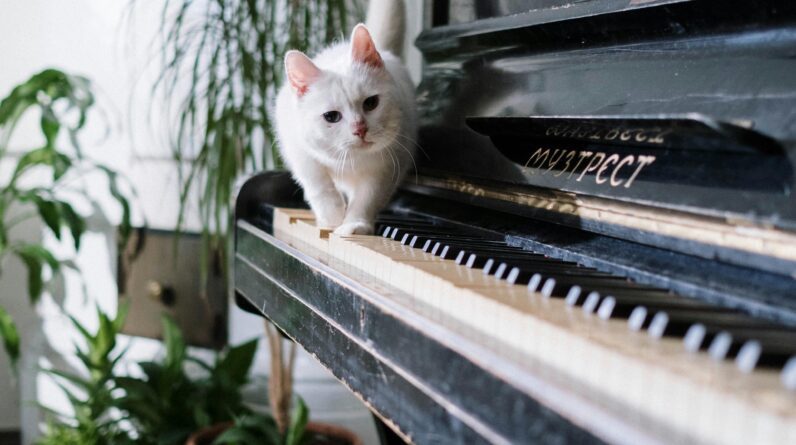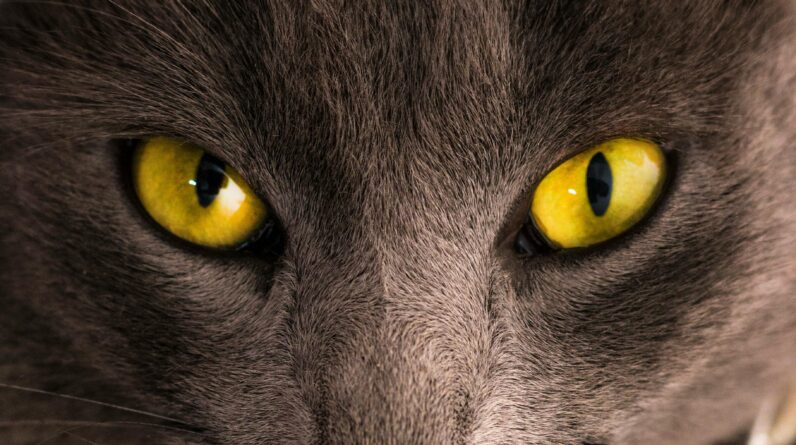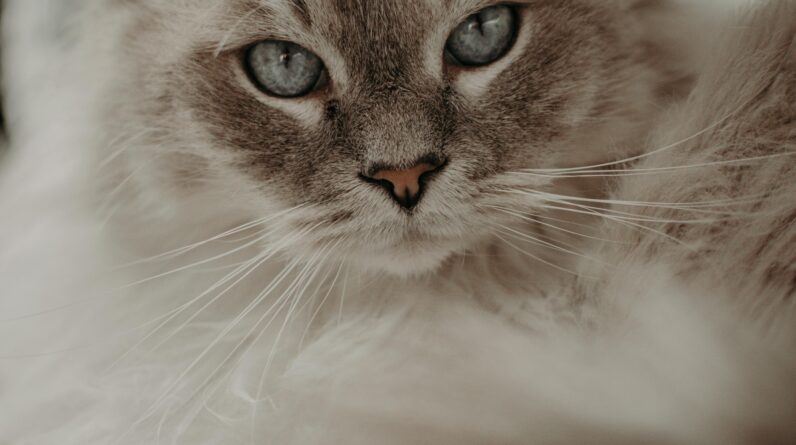If you’ve noticed unfamiliar black spots on your ginger cat‘s nose, you’re not alone.
These distinctive freckles are often a benign condition known as lentigo simplex, commonly found in orange felines.
We’ll take a closer look at what causes these spots and how they impact your pet’s health. Keep reading to demystify those cute speckled noses!


Key Takeaways
- Ginger cats often get black spots on their noses and lips due to a benign condition called lentigo simplex, which is linked with the genes that give them their orange color.
- These dark spots are usually flat and harmless, but it’s important to watch for changes in size or shape that could signal other health issues.
- Regular check – ups with your vet can help confirm if the spots are simply lentigo or something more serious, ensuring your cat stays healthy.
- No treatment is necessary for the common freckles of lentigo unless they change significantly; just monitor and enjoy what makes your ginger cat uniquely beautiful.
Understanding Lentigo Simplex in Ginger Cats


In ginger cats, Lentigo Simplex, aka Ginger Cat Black Spots Nose, manifests as small yet distinct black spots on areas like the nose and lips.
It is often tied to their vibrant coat color due to a genetic link involving melanocytes, the cells responsible for pigmentation.
Definition and Characteristics


These black spots are usually found around areas such as the nose, lips, gums, and eyelids – similar to freckles in humans.
They result from clusters of melanocytes, which are pigment-producing cells that give color to the fur and skin.
These markings are charming beauty spots unique to your orange tabby or calico companion.
Although lentigo may look like a cause for concern due to its resemblance to more severe conditions involving dark pigmentation, it’s important for you as a cat owner, to know that it’s typically harmless.
Your furry friend isn’t in pain or discomfort because of these freckled noses or gums.
Now, let’s explore why this genetic condition is specifically linked with certain cat coat colors.
The Genetic Connection to Coat Color


The distinct red or orange pigment that makes your ginger cat so striking is more than just a pretty feature.
It’s closely linked with the development of lentigo.
The same genes responsible for fiery fur also increase the chances of those cute freckles appearing, especially on the nose and mouth.
With these hereditary factors in play, it’s not uncommon for owners to spot dark marks popping up as their feline friends grow older.
Your beloved orange tabby‘s vibrant coat color is directly tied to its genetics.
Specific genes dictate whether a kitten will sport stripes, solid hues, or something in between.
In ginger cats, melanocytes—the cells that produce pigmentation—can cause those characteristic black spots you see on their nose and lips.
These harmless flecks are simply an aesthetic byproduct of what gives your cat its warm-colored whiskers and paws: a rich tapestry woven by its genetic makeup.
Identifying Black Spots on Your Cat’s Nose

As a cat owner, you may notice tiny dark spots on your ginger cat’s nose, often benign and typically found in clusters or as individual freckles.
These markings can vary in size and shape, but it’s crucial to monitor them for any changes that could indicate a need for veterinary consultation.
Veterinary bills can be expensive! Get a cat Insurance




Differentiating these innocent spots from other conditions requires close observation; if the black spots are flat and do not change over time, they’re likely harmless lentigines.
However, should you observe any elevation, rapid growth or irritation associated with the marks, this calls for professional evaluation to rule out any other skin issues.
Common Appearance and Locations


Ginger cats often pride themselves on their distinctive orange coats, but they may also develop charming dark spots that stand out on their snouts.
These black or brown spots typically start small and flat on the nose, resembling human freckles.
Over time, they can spread to other areas such as the lips, gums, and even the eyelids.
Lentigo in ginger cats shows up where you might expect to see a delicate dusting of freckles—around areas exposed when your feline friend meows or purrs.
Don’t be alarmed if you spot these markings appearing more frequently or becoming more prominent with age; it’s a normal part of many orange tabbies’ development.
Moving beyond just observing these marks, it’s essential to learn how to distinguish lentigo from other conditions that could affect your cat’s skin health.
Differentiating Lentigo from Other Conditions


Black spots on your ginger cat’s nose might catch your eye and make you wonder about their health.
Lentigo is a common condition in orange cats, yet it’s crucial to distinguish it from other potential issues.
- Look closely at the spot’s shape and size: Lentigo spots are usually small, flat, and randomly shaped. They are not raised or accompanied by changes in the skin texture.
- Examine the color consistency: Spots caused by lentigo tend to be solidly pigmented and even in color; they should not have a spectrum of colors within them.
- Check for multiple occurrences: A single black spot could be a mole or freckle, but multiple dark spots on a cat’s nose, gums, or eyelids suggest lentigo.
- Notice any changes in behavior: Cats with simple lentigo won’t show signs of discomfort. If your cat seems bothered by these spots—like scratching or shaking its head—it may indicate another issue.
- Take note of the age factor: Lentigo typically develops as ginger cats grow older. The sudden appearance of black spots on younger cats may prompt further examination for different conditions.


Diagnosing and Treating Lentigo in Cats


When your ginger cat presents with small black spots on their nose, a veterinarian will typically conduct a thorough examination to diagnose lentigo.
This condition is generally harmless and doesn’t require treatment; however, if there’s any change in the spots’ appearance or behavior changes in your feline friend, the vet may recommend further investigation to rule out other issues.
The focus for managing lentigo primarily involves monitoring for any alterations in the skin markings, ensuring they remain benign features of your cat’s charming appearance.
Veterinary Diagnosis Process


Ginger cats often charm us with their vibrant coats and playful personalities, but it’s crucial to keep an eye on any black spots that may appear on their noses.
These marks may indicate a condition known as lentigo simplex, which requires a veterinary diagnosis to manage properly.
- Your vet will start with a detailed physical examination focusing on the dark spots on your cat’s nose, mouth, and possibly gums.
- They’ll ask for your cat’s full health history, including any recent changes in behavior or appetite that might be related.
- To rule out other conditions that may cause similar markings, such as malignant melanomas or sun damage, your vet will compare the spots’ appearance to known symptoms of those issues.
- Your veterinarian may recommend a biopsy if there is any uncertainty about the diagnosis. This involves taking a small sample of the affected skin and sending it to a lab for microscopic evaluation.
- Your vet will look at the size, shape, and pattern of the black spots as these characteristics can help differentiate between lentigo simplex and more serious conditions.
- If lumps or irregularities in texture are present around the dark areas, further tests might be needed to ensure they’re not signs of other health problems.
- The location of these freckled noses in cats is also telling; lentigo is often found where melanocytes are more active due to genetic factors tied to coat color.
Typical Treatments and Management


Treating lentigo in your ginger cat is typically straightforward because this condition doesn’t call for medical intervention.
The black spots on your cat’s nose, lips, or chin may catch your eye, but rest easy knowing they’re just a sign of those charming freckles many orange tabbies have.
Management consists simply of monitoring these harmless marks during routine pet care.
Watch for any drastic changes in size or coloration during regular cuddle sessions or grooming.
If you notice dark spots on your cat’s gums that weren’t there before, it’s good practice to mention them at the next vet visit just as a precaution.
However, these melanocytes – cells responsible for pigmentation – are usually benign and part of what makes each ginger cat unique in appearance.
No special creams or medications are necessary; just enjoy the distinctive beauty mark that adds character to your feline friend’s face!




When to Consult a Veterinarian


If you notice your ginger cat’s black nose spots changing in size, shape, or color, it’s wise to seek a veterinarian’s assessment to rule out any underlying issues.
Keep an eye out for signs like swelling, bleeding, or other changes that differ from the typical appearance of lentigo simplex; these may indicate more severe conditions that require professional attention.
Remember that while most black spots are benign and related to lentigo simplex, your vet is the best source for an accurate diagnosis and peace of mind regarding your feline friend’s health.
Monitoring Changes in the Spots


Keeping an eye on the black spots on your ginger cat’s nose is essential for their health.
These marks, resulting from lentigo, may alter in appearance over time.
Signs that Warrant Professional Attention


As you keep an eye on the black spots on your ginger cat’s nose, be vigilant for any signs of change that could indicate a problem.
It’s essential to know when these dark spots on your feline’s nose or mouth might require a closer look from a veterinarian.
- Sudden growth in the size or number of black spots can be an alert that something is changing with your cat’s health and should be evaluated by a professional.
- Raised black spots, as opposed to flat ones, are more likely to be cancerous and must not be ignored; contact your veterinarian promptly if you notice this.
- Changes in the color intensity or shape of the dark spots shouldn’t go unchecked. A quick visit to the vet can rule out any serious issues.
- If black crust forms on the cat’s nose, it could point towards an infection or another skin condition needing veterinary assessment.
- Be aware if you discover dark spots appearing under your cat’s fur; this could signal an underlying issue that isn’t immediately visible.
- Abnormal behavior such as changes in litter box usage, vomiting repeatedly, or showing overwhelming fatigue requires attention from a vet as they may suggest broader health concerns.
- Watch for modifications in eating habits. A sudden increase or decrease in appetite signifies it’s time to seek professional advice.
- Take action if your cat starts dragging its back legs. This is a critical sign and demands immediate veterinary care.
- Any lump, bump, or mass found on your cat during grooming should lead you to consult with a veterinarian for further examination.




Conclusion


Your ginger cat’s black spots are a natural part of their charm and uniqueness, indicative of the lentigo condition common among their kind.
Keep an eye on your furry friend’s markings and enjoy the beauty they add to their golden coat.
Remember to stay vigilant for any changes, and don’t hesitate to seek veterinary advice if something seems off.
Cherish every freckle as a signature trait of your beloved pet, knowing you’re well-informed about what makes them unique.
FAQs
1. What are the black spots on my ginger cat’s nose?
The black spots you see on your ginger cat’s nose are likely lentigo, a common condition where dark spots appear due to increased melanocytes.
2. Should I worry about dark spots on my cat’s gums and mouth?
Dark spots on a cat’s gums and around the mouth area are usually harmless, but if you notice any changes in size or color, it’s best to consult with a vet for a check-up.
3. Will the black spots on my ginger cat’s nose go away over time?
In most cases, the black or dark spots caused by lentigo will stay with your domestic ginger cat throughout its life without causing any issues.
4. Can other types of cats get these black spots like my ginger cat has?
Yes, while lentigo is more common in ginger cats, it can occur in cats of different colors too, though less frequently than in their orange-furred friends.
More Ginger Cat Articles On This Site
- Explore Cat-Guide: Your Feline Resource Hub
- Ginger Cats: Decoding Black Nose Spots
- Intriguing Black Mouth Spots on Ginger Cats
- Goldie: A Perfect Name for Female Ginger Cats







